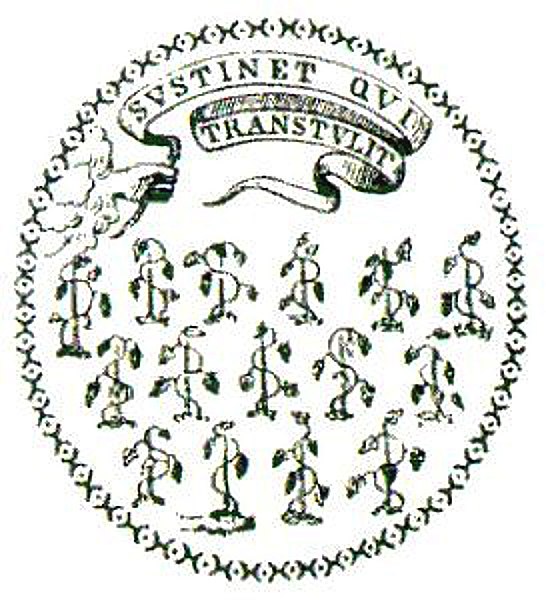The Great Seal of the State of Connecticut has been the coat of arms of the U.S. state of Connecticut since May 1784. It depicts three grapevines and a ribbon below with the Latin motto: Qui Transtulit Sustinet, with SIGILLUM REIPUBLICÆ CONNECTICUTENSIS in the border.
Seal of the Colony of Connecticut (1711–1784)
Seal of the Colony of Connecticut (1639–1687)
Connecticut historical coat of arms, illustrated by the American engraver Henry Mitchell in State Arms of the Union, published in 1876 by Louis Prang.
Historical armorial of U.S. states from 1876
Historical coats of arms of the U.S. states date back to the admission of the first states to the Union. Despite the widely accepted practice of determining early statehood from the date of ratification of the United States Constitution, many of the original colonies referred to themselves as states shortly after the Declaration of Independence was signed on 4 July 1776. Committees of political leaders and intellectuals were established by state legislatures to research and propose a seal and coat of arms. Many of these members were signers of the Articles of Confederation, Declaration of Independence, and United States Constitution. Several of the earliest adopted state coats of arms and seals were similar or identical to their colonial counterparts.
State Arms of the Union (title page, illustrated, 1876)
Ohio's seal depicts Mount Logan (elevation 1,243 ft (379 m)) and nearby summits in Chillicothe.
Image: US Col CT Seal detail (1775)
Image: US NBN CT state seal detail (Series 1882BB reverse) proof







